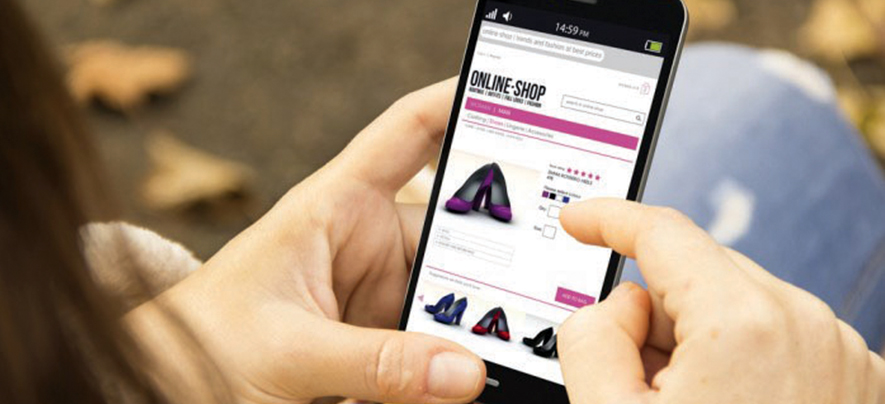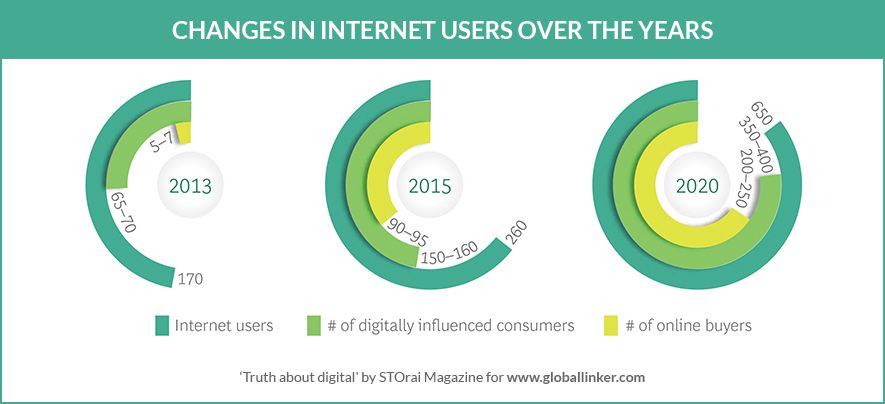The truth about digital

Retail
457 week ago — 9 min read
Winning in the new world requires retailers to re-think their consumer value proposition and align business models to deliver a superior consumer experience. Digital can prove to be a great tool in this endeavour. However, there are several myths surrounding it that prevent retailers from benefitting from its full potential…
MYTH: Digital is all about e-commerce
REALITY: Digital influence is a bigger, more pervasive force than mere e-commerce, which comprises buying online. While only a fraction of people buy online, a much larger percentage log on to the internet to search, research and compare models when they want to buy something. They then visit a physical store to make the actual transaction. Online is where the purchase decision is influenced/made; the store is where it is executed. After the purchase, online is also used to talk about the product and the user experience on social media or even the brand’s site. Therefore, digital channels are being used to not just buy online but also to influence purchase decisions.
E-commerce is being touted as the next big thing in retail. However, it is just the proverbial tip of the digital iceberg. The big part is actually sitting below the surface and it has to do with how retailers are using digital to influence purchase decisions.
By 2020, the number of internet users is expected to grow to 650 million. It is estimated that out of these, 350–400 million consumers could potentially be digitally influenced. These consumers would account for 20–25% (240-250 billion USD) of the retail spend. In comparison, only 200 – 250 million consumers are expected to buy online, claiming only 4-5% (45–50 billion USD) of the overall retail spend.
ADVICE: Digital influence is the big game that retailers have to go after. In India, while there is a lot of work happening on building e-commerce platforms, much less is done on the digital influence front. Going forward, this is an area in which deep-seated investments should be made. Target micro segments of consumers through curated, personalised content to enhance digital influence. Harness the power of social media and build powerful brand advocates and use a data driven approach to enhance effectiveness of digital spend. Build a strong brand online.
MYTH: Online is for the young
REALITY: Digital age, not physical age determines online behaviour. Whether someone buys online will depend on how long (number of years) the person has been exposed to online and not on her age, location or income. Irrespective of how old they are (16 or 60) — people who have been online for a year behave very differently from those who have been online for three to four years. The latter are five times more likely to buy online than the former. When they use the online channel, most brick and mortar retailers make the mistake of trying to attract the youth that pose a juicy opportunity. They do this regardless of whether the youth is their target audience.
ADVICE: However, it’s not the youth opportunity they should be chasing but the online opportunity. Retailers whose core target audience is 35 – 40 year old, should continue targeting that age group even online. Instead of diluting their core proposition to go after the youth, it will help to continue focusing on the core consumer even online to maintain brand consistency.
Research shows that with increase in the digital age, the propensity to get influenced and buy online increases manifold. As the people in the older age brackets spend more time online, and they certainly will, it is imperative for the retailer to get the share of their online spend by influencing them digitally.
MYTH: E-commerce is all about deep discounting
REALITY: Price is not the only driver for e-commerce. Although it appears to be the case, research reveals that only 41% buy online because of it discounts. The other 59% buy online because of various reasons that go beyond price. Assortment, convenience and availability are significant drivers of e-commerce.
In fact, as many as 40% buy online because it has more options, provides access to products unavailable in the city, and allows for customisation. This is especially important for those staying in tier II and III towns, as the local stores have limited options. Those living in non-metros don’t have access to such a wide range of merchandise. The other major reason for engaging in e-commerce is ease or convenience such as option of home delivery and comfort of buying from anywhere. Availability of detailed information about the product, ability to research before buying that helps make an informed decision are also factors that make people lean towards e-commerce. In categories such as intimate apparel or personal hygiene, the unavailability of a salesman is a welcome feature as these purchases can then me made in privacy.
ADVICE: Retailers need to pivot towards non-price drivers relevant to the category, e.g. curated assortment, variety, personalisation and convenience and invest in them. This will help build brand loyalty. Also, they need to build clear aspiration and road map for a profitable e-commerce business. Articulate a clear revenue and profitability aspiration for the e-commerce business backed by a compelling consumer value proposition and a robust operating model.
MYTH: The physical store is dead
REALITY: Stores would continue to remain important but their role would need to be re-imagined. As the consumer is getting more digitally adept, some categories are rethinking the role of their stores. We see it prominently in apparel. In some of the more developed markets, we see retail concepts coming up where the store is not an inventory location but a place where one gives consumer the experience and access to virtual reality.
Retailers like Nordstrom, for example, mention the number of likes and comments each product has received on Pinterest and other social media. Like in the case of Nordstrom, going forward the store’s role needs to complement what’s happening in the digital world.
Such innovations will be seen in categories such as electronics, cosmetics, home decor and apparel, where consumers are likely to have a higher degree of digital influence. Companies that sell electronics such as Apple and Samsung are designing their stores to be places where the consumer will experience the products. They do not necessarily expect the actual transaction to take place there but want to use the store to help consumers make the right purchase based on the real product experience.
ADVICE: Re-imagine the role of physical stores to cater to the omni-channel consumer: Roll out selective digital interventions to offer an elevated shopping experience in stores. Craft seamless and integrated cross channel journeys for the omni-channel shoppers. In order to be capital efficient, invest in a segmented approach for rolling out digital initiatives. For instance, based on careful study, decide on the specific stores in your chain that will have offers and find out the digital infrastructure required for it.
It is not recommended to integrate digital in the store for its coolness but to address an unfulfilled need. Create an agile back-end through digitisation to drive efficiency and effectiveness of operations. The nimbleness of a retailer’s IT systems will prove critical in determining the quality of both, the experience and the efficiency.
Article & image source: STOrai Magazine
Disclaimer: The views and opinions expressed in this article are those of the author and do not necessarily reflect the views, official policy or position of GlobalLinker.

View STOrai 's profile
Other articles written by STOrai Magazine
The Art & Science of People Pleasing in Retail
14 week ago
Most read this week













Comments
Share this content
Please login or Register to join the discussion